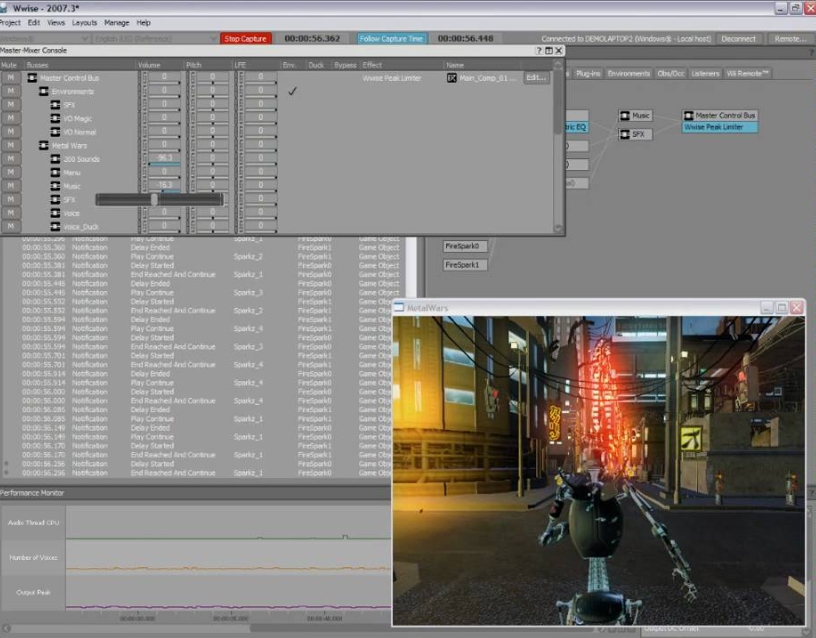Takeaway
In the realm of 2D game development, audio is not merely an accessory; it is a fundamental component that can significantly enhance player engagement and immersion. By leveraging advanced audio techniques, developers can create a more dynamic and emotionally resonant gaming experience.
The Role of Audio in 2D Game Development
Audio serves as a critical element in 2D game development, influencing player perception and emotional response. It encompasses various components, including background music, sound effects, and voiceovers. Each of these elements plays a unique role in shaping the overall gaming experience. According to a study by the University of Southern California (USC) in 2021, players reported a 30% increase in immersion when high-quality audio was integrated into gameplay (source: USC, 2021).
1. Dynamic Soundscapes
Creating a dynamic soundscape is essential for enhancing the player’s experience. This involves using adaptive audio techniques that respond to in-game events. For instance, implementing a system where background music changes based on the player’s actions or the game environment can significantly increase immersion. Tools like FMOD and Wwise allow developers to create complex audio systems that can react in real-time to gameplay changes

Wwise helps create complex audio that responds to the game.
For example, in a platformer game, the music could shift from a light-hearted tune to a more intense score as the player approaches a boss fight. This not only heightens tension but also signals to the player that they are entering a critical moment in the game.
2. Spatial Audio Techniques
Spatial audio is another powerful tool that can enhance the 2D gaming experience. By simulating how sound behaves in a three-dimensional space, developers can create a more immersive environment. Techniques such as binaural audio can be employed to give players a sense of directionality, making them feel as if sounds are coming from specific locations within the game world.
Implementing spatial audio can be particularly effective in puzzle games or exploration-based titles, where players need to rely on auditory cues to navigate their surroundings. For instance, the sound of a hidden object could be designed to emanate from a specific direction, guiding players toward it.
3. Layering Sound Effects
Layering sound effects is a technique that can add depth and richness to the audio experience. By combining multiple sound layers, developers can create a more complex and engaging auditory landscape. For example, in a 2D adventure game, the sound of footsteps can be layered with ambient sounds like rustling leaves or distant animal calls to create a more immersive environment.
Moreover, using different audio samples for various surfaces (e.g., grass, gravel, wood) can enhance realism. This attention to detail not only enriches the gameplay experience but also helps in building a more believable game world.
4. Implementing Audio Feedback
Audio feedback is crucial for reinforcing player actions and decisions. Every interaction in a game should be accompanied by an appropriate sound effect that provides feedback to the player. This can range from simple sounds like button clicks to more complex audio cues for achievements or level completions.
For instance, in a 2D shooter game, the sound of a gun firing should be distinct and satisfying, while the sound of hitting a target should provide immediate auditory feedback. This not only enhances the gameplay experience but also helps players understand the consequences of their actions, thereby improving their overall engagement.

Realistic gunshot audio increases immersion and feedback.
5. Utilizing Procedural Audio
Procedural audio is an innovative approach that allows developers to generate sound in real-time based on game parameters. This technique can be particularly useful in 2D games where the environment is dynamic and ever-changing. By using algorithms to create sound effects, developers can ensure that the audio remains fresh and engaging throughout the gameplay.
For example, in a 2D racing game, the sound of the engine could change based on the speed of the vehicle, creating a more immersive experience. This not only enhances realism but also keeps players engaged by providing a unique auditory experience each time they play.
6. Voice Acting and Dialogue
Incorporating voice acting into a 2D game can significantly enhance character development and storytelling. High-quality voiceovers can bring characters to life, making them more relatable and engaging for players. When done correctly, voice acting can evoke emotions and create a deeper connection between the player and the game world.
However, it is essential to ensure that the voice acting aligns with the game’s tone and style. For instance, a comedic game may benefit from exaggerated voice performances, while a serious narrative-driven game may require more subdued and realistic delivery. Investing in professional voice actors can elevate the overall quality of the game and contribute to its success.
7. Sound Design for Accessibility
Accessibility in gaming is an increasingly important consideration, and sound design plays a crucial role in making games more inclusive. Developers should consider incorporating audio cues that assist players with visual impairments or those who may have difficulty processing visual information.
For example, using distinct sound effects to indicate important game events or changes in the environment can help visually impaired players navigate the game more effectively. Additionally, providing options for adjusting audio levels can cater to players with hearing impairments, ensuring that everyone can enjoy the game.
8. Testing and Iteration
Finally, thorough testing and iteration of audio elements are vital for achieving the desired impact. Developers should conduct playtests to gather feedback on the audio experience and make necessary adjustments. This iterative process allows for fine-tuning of sound effects, music, and voiceovers to ensure they align with the overall game design and enhance player engagement.
Utilizing tools like A/B testing can help developers understand which audio elements resonate best with players, allowing for data-driven decisions in the audio design process.
Conclusion
In conclusion, audio is a powerful tool in 2D game development that can significantly enhance player engagement and immersion. By implementing dynamic soundscapes, spatial audio techniques, layered sound effects, audio feedback, procedural audio, voice acting, and accessibility considerations, developers can create a more compelling gaming experience. The importance of testing and iteration cannot be overstated, as it allows for continuous improvement and refinement of audio elements. By prioritizing audio in the development process, game developers can unlock innovation and elevate their games to new heights.
Key Takeaways:
1. Dynamic soundscapes enhance immersion.
2. Spatial audio techniques provide directionality.
3. Layering sound effects adds depth.
4. Audio feedback reinforces player actions.
5. Procedural audio keeps experiences fresh.
6. Voice acting enriches storytelling.
7. Accessibility in sound design is crucial.
8. Testing and iteration improve audio quality.

